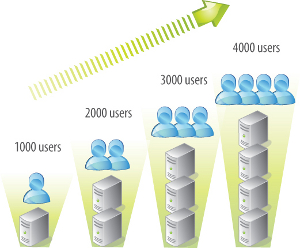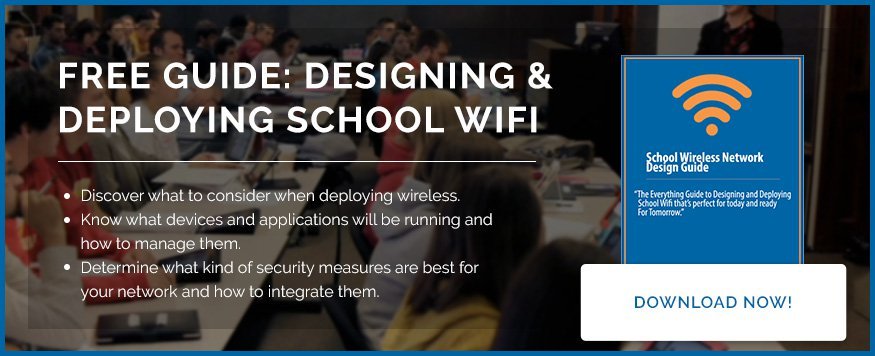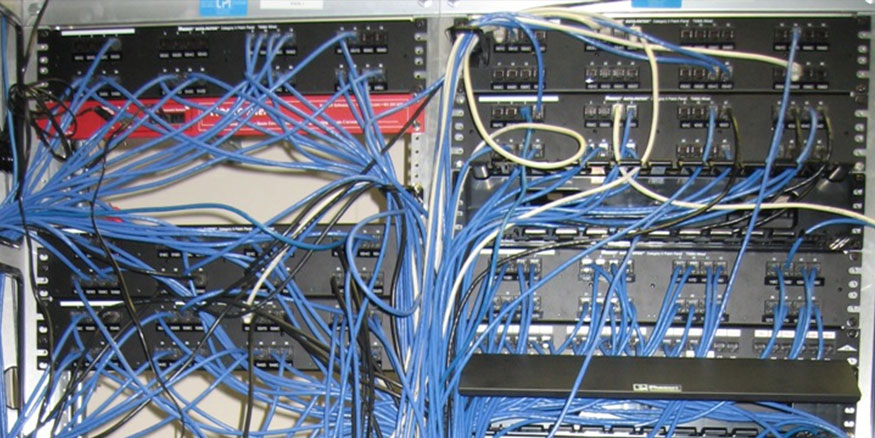
The significance of technology in modern classroom learning cannot be ignored. It hasenabled students to learn more effectively by providing a wide range of learning materials that are accessible through the internet.

In addition, on-campus intranets have greatly improved communication and interaction between students and teachers. For this reason, you must ensure that your school wireless network design is appropriate, and consists of the necessary features and components in order to achieve maximum benefits. Below is a brief look at some of the top features that you should consider.
Centralized Management:
Traditional school networks consisted of access points that used to be managed independently. It was a pity then, if you had to be the network administrator since you would have to spend your entire day moving from one access point to another, troubleshooting and ensuring that the network was running as expected. However, the wireless network design for modern day school networks are much complex and may consist of hundreds or even thousands of access points. Therefore, you will require a smarter way of managing all the access points within your network, namely, centralized management, which enables you to control and upgrade your system from one point..jpg?width=293&height=242&name=scalabilty_(1).jpg)
Scalability:
School networks have experienced significant growth over the past few years. In addition, the variety of devices being supported nowadays is much wider, owing to the introduction of smartphones and other mobile devices that have wireless capability. This growth is expected to continue into the future, and the range of devices to increase. For this reason, your wireless network design should be such that, expansion in terms of coverage and capacity is possible, without having to overhaul or build an entirely new network.
Real time Channel and Power Settings Adjustment:
The greatest challenge with wireless network design is that the radio frequencies in use, as well as the power settings are bound to change without warning. Often, you are forced to rely on user complains to identify problems since it would be impossible to memorize or keep an eye on the settings of an entire network, consisting of several access points. Similarly, the use of RF monitoring and troubleshooting software may prove expensive. The only way out would be to implement a system that has the ability to auto-adjust the power and channel settings in real time.
Load Balancing:
For many years, the wireless network design for schools was meant to offer coverage within the campus, with little regard to the performance. This did not pose a great problem since the demand for wireless network services was limited. However, the rapid increase in the number of smart devices, as well as the growth and increased significance of the internet in learning has seen the demand on the existing wireless network infrastructure increase. As such, there is over-utilization of the access points leading to the performance deteriorating. Your wireless network design must therefore, incorporate high capacity load balancing to enable you to actively, shift users to and from access points, depending on the capacity that is available.
Network Access Control:
The administration of traditional school networks was both expensive and time consuming, owing to the fact that an IT department was required to setup and manage the network. Even the basic roles such as registering users required the intervention of the network administrators. Therefore, your wireless network design should have network access control, which allows for automated user/device registration. In addition, your wireless network design should support integration with active users directory to allow for role-based user access control. The system should be able to capture important information about all the devices registered on the network, including the type of devices and the status of networking components.
Content Filtering/Prioritization:
Your choice of wireless network design must consist of mechanisms for filtering and prioritizing web content. This allows you to first of all, filter bad content, and prevent the misuse of network resources through video streaming and torrenting. On the other hand, it gives you the ability to give first priority to authorized learning tools and applications running on the network.
Dual Band Support:
Your wireless network design should incorporate access points that support dual band communication. As such, these devices are able to operate in both 2.4 GHz and 5 GHz spectrum. Since the 2.4 GHz band is normally overcrowded, you can automatically switch users to the 5 GHz when needed. This enables you to implement both outdoor and indoor wireless coverage within your wireless network design.
Overall, the choice of features for your school network will depend on individual requirements. Therefore, you need to consider what you need the system for, in addition to other factors such as coverage, capacity, and budget among others. These factors will guide you when coming up with an ideal wireless network design for your school. You can speak with one our school wireless experts for free for more guidance on the specific requirements your schools wireless design should include. Just contact us here, we are always happy to help. Check out our Free Wireless Design Guide for Schools as well for more information. Good luck!






